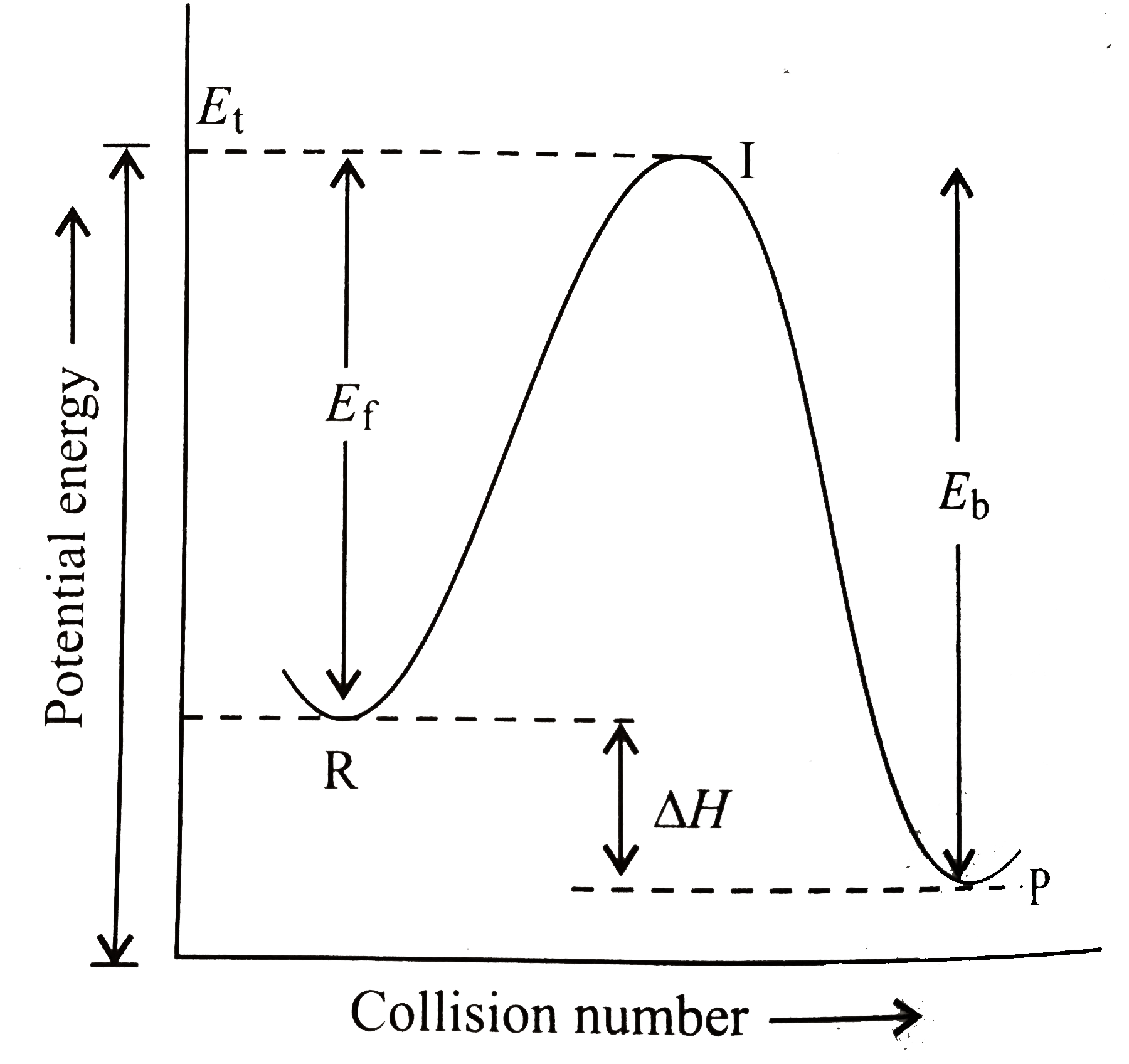Rate constant k of a reactionn is dependent on temperature k=Ae−Ea/RT, k has the least value at
high T and high Ea
high T and small Ea
low T and low Ea
low T and high Ea
The correct Answer is:D
Step by step video, text & image solution for Rate constant k of a reactionn is dependent on temperature k=Ae^(-E_(a)//RT), k has the least value at by Chemistry experts to help you in doubts & scoring excellent marks in Class 12 exams.
Updated on:21/07/2023Topper's Solved these Questions
Similar Questions
The rate of reaction increases isgnificantly with increase in temperature. Generally, rate of reactions are doubled for every 10∘C rise in temperature. Temperature coefficient gives us an idea about the change in the rate of a reaction for every 10∘C change in temperature.
Temperature coefficient(μ)=Rate constant of(T+10)∘CRate constant atT∘C
Arrhenius gave an equation which describes aret constant k as a function of temperature
k=Ae−Ea/RT
where k is the rate constant, A is the frequency factor or pre-exponential factor, Ea is the activation energy, T is the temperature in kelvin, R is the universal gas constant.
Equation when expressed in logarithmic form becomes
logk=logA−Ea2.303RT
For a reaction Ea=0 and k=3.2×108s−1 at 325K. The value of k at 335K would be
View SolutionThe dependence of the rate constant for a reaction on temperature is given by the equation k=Ae−EaRT Under what conditions is the rate constant k the smallest?
View Solution
Knowledge Check
Rate constant k of a reaction is dependent on temperatur:
k=AeEa/RT
K has the least value atAhigh T and high EaBhigh T and small EaClow T and low EaDlow T and high EaThe rate of reaction increases isgnificantly with increase in temperature. Generally, rate of reactions are doubled for every 10∘C rise in temperature. Temperature coefficient gives us an idea about the change in the rate of a reaction for every 10∘C change in temperature.
Temperature coefficient(μ)=Rate constant of(T+10)∘CRate constant atT∘C
Arrhenius gave an equation which describes aret constant k as a function of temperature
k=Ae−Ea/RT
where k is the rate constant, A is the frequency factor or pre-exponential factor, Ea is the activation energy, T is the temperature in kelvin, R is the universal gas constant.
Equation when expressed in logarithmic form becomes
logk=logA−Ea2.303RT
Activation energies of two reaction are Ea and Ea' with Ea>E'a. If the temperature of the reacting systems is increased form T1 to T2 (k' is rate constant at higher temperature).Ak1'k1=k2'k2Bk1'k1<k2'k2Ck1'k1>k2'k2Dk1'k1>2k2'k2The rate of reaction increases isgnificantly with increase in temperature. Generally, rate of reactions are doubled for every 10∘C rise in temperature. Temperature coefficient gives us an idea about the change in the rate of a reaction for every 10∘C change in temperature.
Temperature coefficient(μ)=Rate constant of(T+10)∘CRate constant atT∘C
Arrhenius gave an equation which describes aret constant k as a function of temperature
k=Ae−Ea/RT
where k is the rate constant, A is the frequency factor or pre-exponential factor, Ea is the activation energy, T is the temperature in kelvin, R is the universal gas constant.
Equation when expressed in logarithmic form becomes
logk=logA−Ea2.303RT
For which of the following reactions k310/k300 would be maximum?AP+Q→R,Ea=10kJBE+F→D,Ea=21kJCA+B→C,Ea=10.5kJDL+M→N,Ea=5kJ
The temperature dependence of rate constant (k) of a chemical reaction is written in terms of Arrhenius equation, k=Ae−Ea/RT) Activation energy (Ea) of the reaction can be calculate by plotting
View SolutionArrhenius studies the effect of temperature on the rate of a reaction and postulted that rate constant varies with temperature exponentially as k=AeEa/RT . Thuis method is generally used for finding the activation energy of a reaction. Keeping temperature constant, the effect of catalyst on the activation energy has also been studied.
If the rate of reaction doubles for 10∘C rise of temperature form 290K to 300K, the activation energy of the reaction will be approximately :
View SolutionRate of a reaction can be expressed by Arrhenlus equation, k=Ae−Ea/RT. Here, E is
View SolutionA colliison between reactant molecules must occur with a certain minimum energy before it is effective in yielding Product molecules. This minimum energy is called activation energy Ea Large the value of activation energy, smaller the value of rate constant k. Larger is the value of activation energy, greater is the effect of temperature rise on rate constant k.

Ef= Activation energy of forward reaction
Eb= Activation energy of backward reaction
ΔH=Ef−Eb
Ef= threshold energy
The rate constant of a certain reaction is given by k=Ae−Ea/RT
(where A= Arrhenius constant). Which factor should be lowered so that the rate of reaction may increase?
View SolutionThe rate of chemical reaction are strongly affected by temperature . Arrhenius (1889) gave following relation between rate contant and temperature .
k=Ae−Ea/RT .....(i)
This equation is called Arrhenius equation. The constant 'A' is caleld Arrhenius of pre-exponential factor. Logarithm of equation (i) given :
log10k=log10AEa2.3030RT .....(ii)
The rate constant for a reaction is .
log10sec−1=14−1.25×104KT .....(iii)
At what temperature, rate constant of the reaction is equal to the pre-exponenntial factor ?
View Solution
